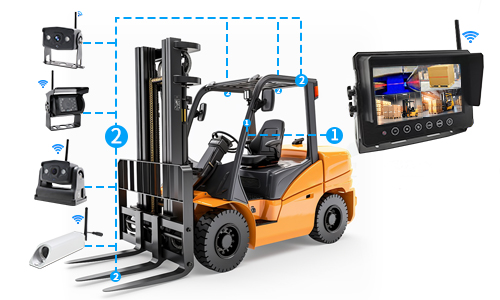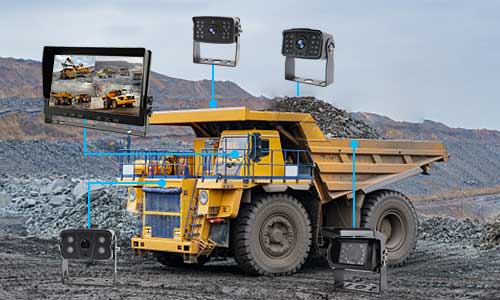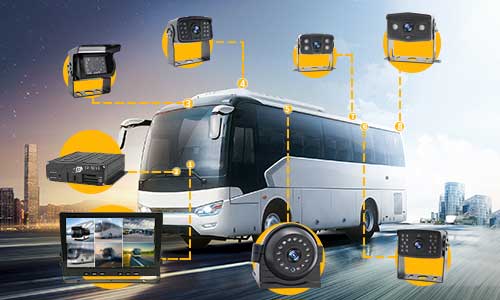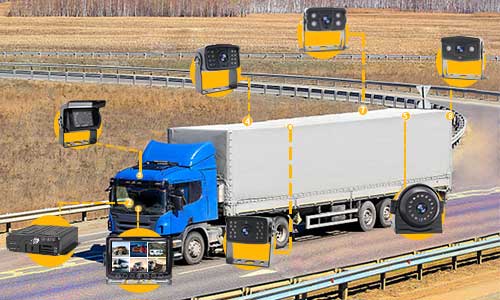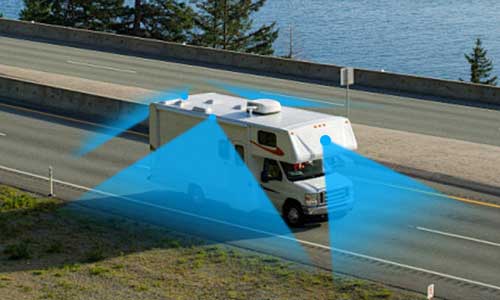Why Night Vision Matters for 360 Dash Cams
Driving at night presents many risks. Poor lighting, fast-moving objects, and unclear road markings all contribute to accidents. Therefore, night vision technology in 360 ° dash cams plays a critical role in improving driver awareness and safety.
These advanced cameras not only provide wide coverage but also ensure that low-light environments do not compromise image clarity. In this guide, we explore why night vision in 360 dash cams is a key feature to look for and how it works to protect both drivers and vehicles.
1. The Basics: What Is a 360 Dash Cam?
A car 360 ° dash cam uses multiple wide-angle lenses or a fisheye lens to cover every direction around the vehicle. Unlike traditional dash cams, which capture only the front or rear, 360 models offer a panoramic view.
This setup helps eliminate blind spots. Consequently, it becomes easier to analyze events in the case of accidents or parking disputes. However, daytime clarity is only part of the story. Nighttime recording quality determines true reliability.
2. Why Night Vision Is Not Just a Bonus Feature
Most traffic collisions happen at night. According to global traffic safety data, nighttime accidents account for over 50% of fatal crashes. Visibility drops significantly after dusk. Therefore, a 360 dash cam with strong night vision isn’t optional — it’s essential.
Notably, night vision helps detect pedestrians, road signs, and approaching vehicles even in poorly lit areas. It also records license plates more accurately in dim settings, which is vital for legal evidence.
3. How Night Vision Technology Works
There are several types of night vision systems used in 360 ° dash cams:
- Infrared (IR) Sensors: Emit infrared light that is invisible to the human eye but clearly recorded by the camera. IR works best for short-range, low-light conditions.
- Starlight Sensors: These use advanced CMOS sensors to enhance ambient light. As a result, they deliver full-color footage even in near darkness.
- HDR and WDR: High Dynamic Range and Wide Dynamic Range adjust brightness levels across scenes. This ensures that bright lights or dark shadows don’t distort image quality.
Each technology has its strengths. For best performance, many modern cameras combine them.
4. Key Benefits of Night Vision in 360 Dash Cams
a. Better Security at Night
A car 360 ° dash cam with night vision works even when the car is parked. Many models offer parking surveillance with motion detection. As a result, you can detect and record potential theft or vandalism in real time.
b. Improved Legal Evidence
After an accident, video footage becomes your strongest defense. Night vision ensures that key events are captured clearly, even in dim or backlit scenes. This helps avoid disputes and speeds up insurance claims.
c. Enhanced Driver Confidence
Knowing that your dash cam can capture everything, even at night, gives peace of mind. Moreover, real-time monitoring through companion apps can alert you to risks in real time.
5. Features to Look for in a Night Vision 360 Dash Cam
When evaluating 360 dash cams, consider the following specifications:
- Lens Aperture: A lower f-number (like f/1.8) allows more light into the sensor. This improves night clarity.
- Sensor Size: Larger sensors capture more light and detail.
- Resolution: At least 1080p is recommended. Some high-end models offer 4K clarity.
- Dynamic Range: Cameras with HDR or WDR handle contrast better, essential at night.
- IR LEDs: Built-in infrared lights enhance vision without visible glare.
Make sure these specs align with your specific driving environment. For instance, urban users may need different setups than rural drivers.
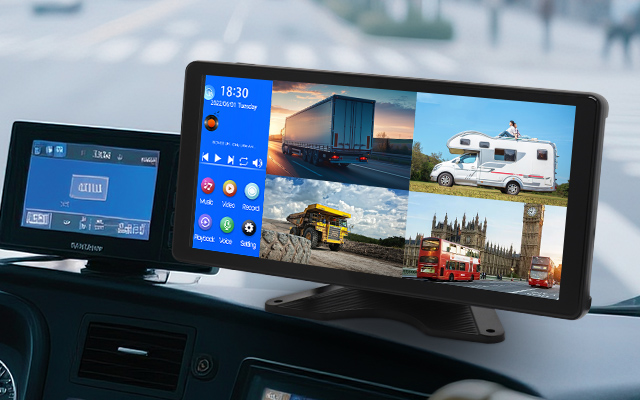
6. Comparing Day vs Night Footage
Many buyers assume that camera clarity is equal throughout the day. This is not true. Without proper night vision, details such as license plates or pedestrian movement often blur or disappear entirely in darkness. 360 ° dash cam with night-enhanced sensors preserves those details. More importantly, they ensure the camera works under street lamps, headlights, or complete darkness without loss of clarity.
7. Installation Tips for Maximum Night Performance
Positioning is key. Mount your 360 ° dash cam centrally on the windshield for symmetrical coverage. Also, avoid placing it behind tinted glass, which reduces IR effectiveness. Next, clean the lens regularly. Dust or smudges reduce clarity. Finally, update your dash cam firmware to ensure that night vision algorithms perform at peak efficiency.
8. Real-World Use Cases: Why Users Rely on Night Vision
Fleet Vehicles: Delivery drivers working after dark use 360 ° dash cams for trip logs and customer dispute resolution.
Rideshare Drivers: Uber or Lyft drivers rely on cameras with night vision to record both passengers and the road.
Parents: Many families use these systems to monitor teen drivers and improve accountability.
These examples highlight how essential night recording is in various contexts.
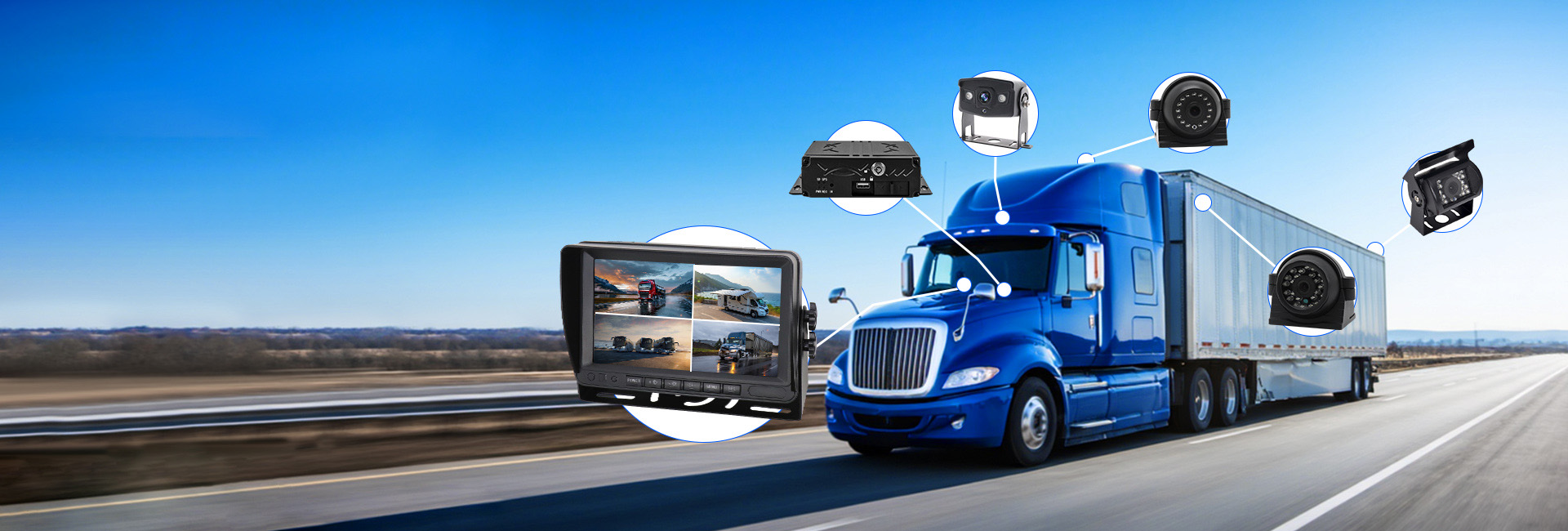
9. Maintenance and Troubleshooting
Night vision technology requires some care. IR LEDs may degrade over time. Check regularly whether the low-light performance drops. Moreover, sensor lenses must be free of scratches to capture clear footage.
If footage appears grainy, adjust exposure settings or test in different lighting conditions. Some apps allow manual tweaks, which can significantly improve output.
Conclusion: Night Vision Is the Core, Not the Add-on
Choosing a 360 ° dash cam without robust night vision is a risk. For complete driving safety and legal protection, a camera must perform flawlessly under all lighting conditions. From sensor type to installation, every detail matters. That’s why modern drivers, especially those using dash cams professionally, prioritize night vision as a non-negotiable feature. Investing in a high-quality 360 ° dash cam with advanced night vision isn’t just smart — it’s essential.


